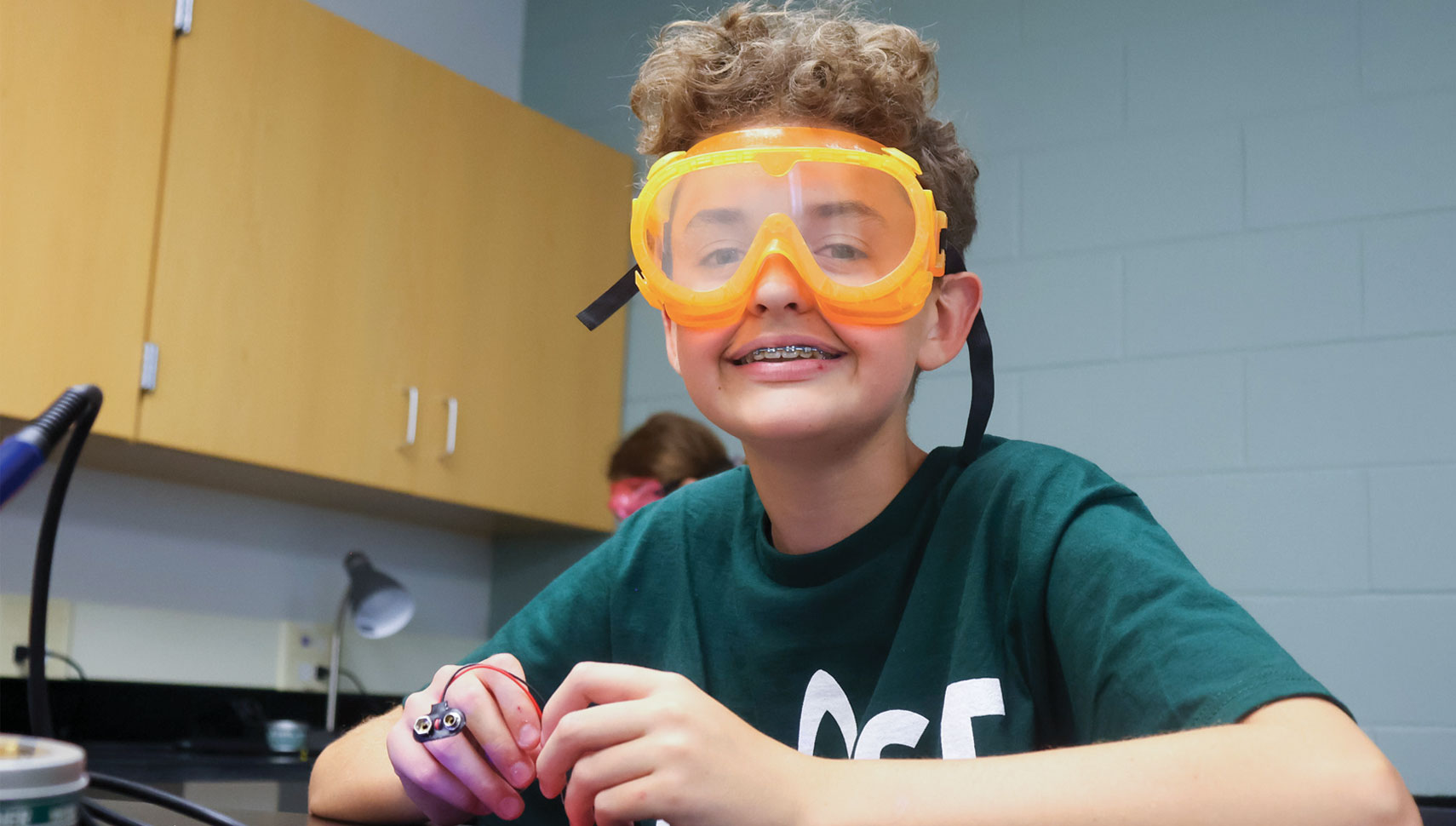Blast Off
W&M launches passion for STEM in Virginia high school students
October 9, 2024
By
Laura Grove ’22

A group of high school students leans forward in anticipation as William & Mary Professor of Physics Irina Novikova lowers a balloon into the horizontal path of a bright green laser beam. When the yellow balloon doesn’t pop like its red predecessor, an animated discussion ensues.
That was just one of the moments of discovery that occurred during the Building Leaders for Advancing Science and Technology (BLAST) program that W&M hosted on campus June 23-26. Eighty ninth and 10th grade students from around Virginia participated in the program, which was organized and funded by the Virginia Space Grant Consortium (VSGC). The project seeks to increase the number of high school graduates who pursue STEM careers by expanding students’ access to hands-on STEM experiences. This is W&M’s second year hosting.
W&M is a long-term member institution of the VSGC. This affiliation provides scholarships and fellowships for students as well as connections to NASA and other organizations. The partnership also provides opportunities to take part in VSGCorganized and funded programs, including BLAST.
W&M Professor of Physics Josh Erlich served as principal investigator and university faculty director for this year’s BLAST program.
“One of the privileges of being a faculty member is the opportunity to demonstrate to the next generation that they can accomplish amazing things if they set their mind to it,” he says. “That’s what BLAST is all about.”
Eighth and ninth grade students who live in Virginia, are interested in STEM and have a C+ or better grade average can apply for the free program through the VSGC’s website. Prior STEM experience is not required.
This year, seven W&M faculty members and seven undergraduates guided BLAST students through activities in synthetic biology, optics, microcontrollers and soldering.
In addition to working through each of the intensive three-hour activities, the BLAST students attended a panel where they learned about the variety of career paths available to majors in STEM disciplines. They also toured professors’ labs and the Makerspace Center in Small Hall and viewed rare science books in Swem Library’s special collections.
“It is crucially important to introduce students to the joys of discovery and teach them that science is fun and that it could have a huge impact on improving people’s lives,” says Margaret Saha, Chancellor Professor of Biology and faculty advisor to W&M’s award-winning iGEM (international Genetically Engineered Machine) team. “It is also important that we engage in the community to share what we do and explain its importance.”
In Saha’s lab, BLAST participants worked closely with undergraduate iGEM team members. They conducted an experiment to isolate novel satellite phages from soil samples, performed a “gram” stain to determine whether bacterial samples were gram positive or gram negative, used different types of candy to construct a model of a DNA circuit and were able to see and feel DNA that they extracted from various fruits.
“We absolutely love the excitement and engagement that these students show,” says Saha. “It is so rewarding to see their faces the first time they see bacteria or DNA and their engagement and interest when they learn they are doing real science.”
The instructors explained that undergraduate participation is a key part of the program as it allows the high school students to interact with students just a few years older and observe their passion for science and research.
“They can also serve as role models,” says Novikova. “For example, the three undergraduates who helped in our lab are women, so the BLAST students saw that women studying physics is not unusual.”
Students shared that they’d discovered careers that they want to pursue and learned to feel more open to doing things outside of their comfort zones. Several suggested extending the program.
“I think everyone who participated had a blast,” says Erlich, “pun intended.”
See more about the BLAST program in W&M News.